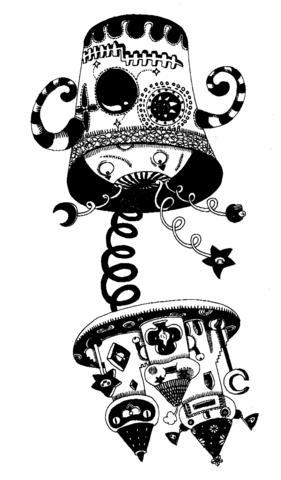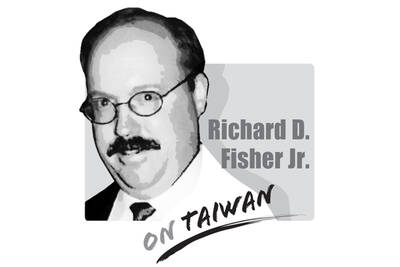Playmobil of Germany has long promoted its colorful plastic pirates, firefighters and farm animals as better-than-your-average plaything -- toys to be handed down rather than chewed up. Now it can add another selling point: They are made in Europe, not China.
The same goes for Lego, the Danish maker of toy bricks, and for Ravensburger, a German puzzle and game manufacturer, though it does produce small quantities of nonpaper toys in Chinese factories.
With Mattel and the US toy industry reeling from recalls of millions of Chinese-made toys, most because of lead paint, some of Europe's best-known toy makers find themselves in the fortuitous position of having bucked an industrywide trend of moving production to China.

"Looking back, it feels like it was right to make that decision," said Andrea Schauer, managing director of Geobra Brandstdtter, which makes Playmobil toys.
"At the level of quality we need," she said, "we didn't have enough manpower to inspect factories in China."
With parents fretting about the safety hazards of toy cars and trains and Barbie accessories, the not-made-in-China label could prove to be a boon to European toy makers, particularly in their domestic markets, where the corner toy store has not yet been elbowed out by retailing giants like Wal-Mart or Toys "R" Us.
"A lot of the sales still rely on the expertise of the guy whom I call Fritz," said Sean McGowan, a toy industry analyst at Wedbush Morgan Securities in New York. "To the extent that parents are at all concerned about this, Fritz is going to steer them toward Lego and Playmobil."
Even in the US, analysts say, there could be a modest bounce for toys not made in China, be they European or US, if parents take the time to look at labels during the coming holiday shopping season. The drawback, some worry, is that consumers might spurn toys altogether.
"When parents say, `My kid wants a car toy or Thomas the train,' are they going to look at where it was made?" asked Tim Conder, a toy analyst with AG Edwards & Sons. "Or are they just going to say, `I'm not going to buy it?'"
no easy choice
Steering clear of China was not an easy choice for Playmobil or Lego. Other European manufacturers, like Brio of Sweden, which produces wooden toys, have moved the bulk of their production to China. About 80 percent of all toys sold in the US are made there.
For those who remained in Europe, the decision to keep most manufacturing there was driven more by economics than safety concerns, though the difficulty of controlling quality in far-away factories was also a factor.
"We looked at various options," said Iqbal Padda, executive vice president in charge of the global supply chain at Lego, noting that at the start, it was widely accepted "that it has to be China."
Schauer said Playmobil, a family-owned company in Zirndorf, Germany, faced intense pressure to move production to China. Most of the industry was moving there, she said, and German banks did not want to lend money to companies to build toy factories at home.
What the companies discovered, though, was while China's unit labor costs were a fraction of those in the West -- the equivalent of US$1.50 an hour compared with US$30 an hour in western Germany -- the distance between China and the companies' biggest markets eroded some of that cost advantage.
In addition, Lego and Playmobil need to respond quickly to fickle consumer demand. To ramp up the production of a surprise hit -- a Playmobil World Cup soccer player, for example -- would be costly in China, where factories are set up to churn out vast volumes of toys with long lead times.
"Toys are not the fashion business, but they are like the fashion business," Padda said. "The need to be able to react to what is going on in the market made us choose" Europe.
Today, Lego makes 65 to 70 percent of its bricks at a high-technology factory near its headquarters in Billund, Denmark. To save money, the company, which has struggled in recent years, is shifting production to two plants in Hungary run by Flextronics, a Singapore-based electronics manufacturer. A new Flextronics plant will open in Juarez, Mexico, this fall.
Less than 3 percent of Lego's production comes from China, and it has no plans to set up a factory there.
Ravensburger said it produces 85 percent of its toys in its home factory in Germany and a company-owned plant in the Czech Republic.
"In-house production," it said, "provides the best possible quality control for us."
Playmobil, a third the size of Lego and a tenth that of Mattel, has also resisted outsourcing, except for a few electronic parts, like the flashing light atop its police car, which is made in China. In addition to a flagship factory near its Bavarian headquarters, it owns two plants in Malta and the Czech Republic.
Sales of Playmobil toys are growing at a double-digit rate, Schauer said. In a twist, it plans to export its European-made toys to Chinese cities like Shanghai and Beijing next year.
Still, Playmobil and its European rivals are not about to gloat over Mattel's misfortune.
"We don't want to throw stones, in case we're sitting in a glass house," said Schauer, whose company last had a recall in the US in 1982, involving toys made by an American contractor.
roman soldiers
Playmobil's medieval knights and Roman soldiers are coated with shiny paint -- brilliant reds, jaunty yellows and such -- which Schauer said contained lead, albeit well below levels hazardous to children. To ensure the safety of its coating process, she said, Playmobil kept close watch over its manufacturing process.
It is clear that Europeans trust Chinese contractors less than their own employees.
In a statement on Playmobil's Web site, its founder, Horst Brandstdtter, said: "Outstanding quality can only be reached when production is carried out under one's own eyes, by people who have developed brand awareness over a long time, and learned to produce the highest quality."
As Schauer put it: "You cannot blindly believe in German manufacturing. But when you are so close to the factory, you can jump in your car and be there in 20 minutes."
Not all Europeans agree that factories need to be nearby. Brio, based in Malmo, Sweden, moved the bulk of its production to China in 2004 after it passed from family ownership to a Swedish investment firm. But the chief executive, Thomas Brautigam, said the company exerted rigorous quality control over its three factories in Guangdong Province.
"We checked every single paint jar when this happened, but found no problems," he said, referring to the Mattel lead recall.
Brio, Brautigam said, adhered to stricter quality standards than the industry norm and chose Chinese partners that abided by those standards, even if it meant forgoing the lowest-cost option.
"Most people are aware that you can't judge everything that comes out of China the same way," he said. "It would mean that 85 percent of all toys have problems, which is absurd."

On Sept. 3 in Tiananmen Square, the Chinese Communist Party (CCP) and the People’s Liberation Army (PLA) rolled out a parade of new weapons in PLA service that threaten Taiwan — some of that Taiwan is addressing with added and new military investments and some of which it cannot, having to rely on the initiative of allies like the United States. The CCP’s goal of replacing US leadership on the global stage was advanced by the military parade, but also by China hosting in Tianjin an August 31-Sept. 1 summit of the Shanghai Cooperation Organization (SCO), which since 2001 has specialized
In an article published by the Harvard Kennedy School, renowned historian of modern China Rana Mitter used a structured question-and-answer format to deepen the understanding of the relationship between Taiwan and China. Mitter highlights the differences between the repressive and authoritarian People’s Republic of China and the vibrant democracy that exists in Taiwan, saying that Taiwan and China “have had an interconnected relationship that has been both close and contentious at times.” However, his description of the history — before and after 1945 — contains significant flaws. First, he writes that “Taiwan was always broadly regarded by the imperial dynasties of
The Chinese Communist Party (CCP) will stop at nothing to weaken Taiwan’s sovereignty, going as far as to create complete falsehoods. That the People’s Republic of China (PRC) has never ruled Taiwan is an objective fact. To refute this, Beijing has tried to assert “jurisdiction” over Taiwan, pointing to its military exercises around the nation as “proof.” That is an outright lie: If the PRC had jurisdiction over Taiwan, it could simply have issued decrees. Instead, it needs to perform a show of force around the nation to demonstrate its fantasy. Its actions prove the exact opposite of its assertions. A
A large part of the discourse about Taiwan as a sovereign, independent nation has centered on conventions of international law and international agreements between outside powers — such as between the US, UK, Russia, the Republic of China (ROC) and Japan at the end of World War II, and between the US and the People’s Republic of China (PRC) since recognition of the PRC as the sole representative of China at the UN. Internationally, the narrative on the PRC and Taiwan has changed considerably since the days of the first term of former president Chen Shui-bian (陳水扁) of the Democratic